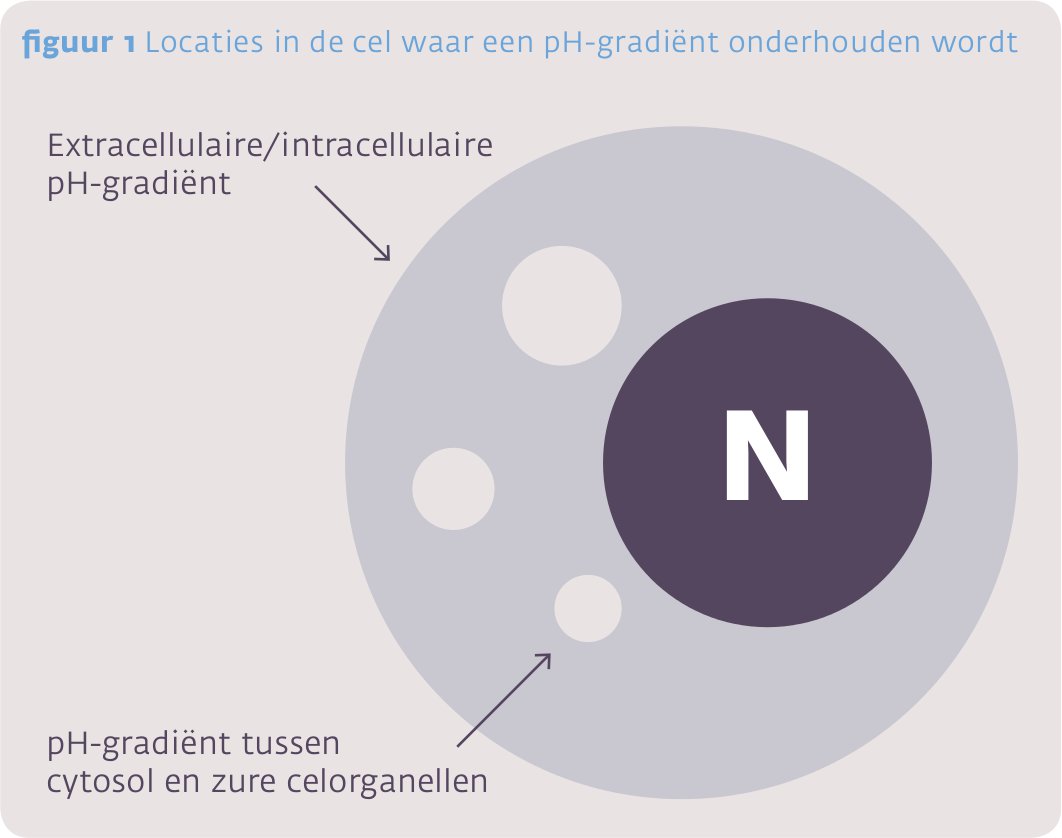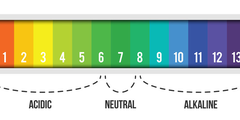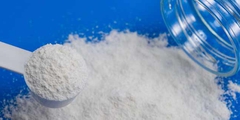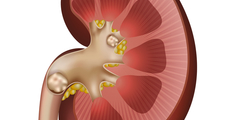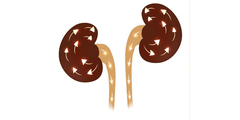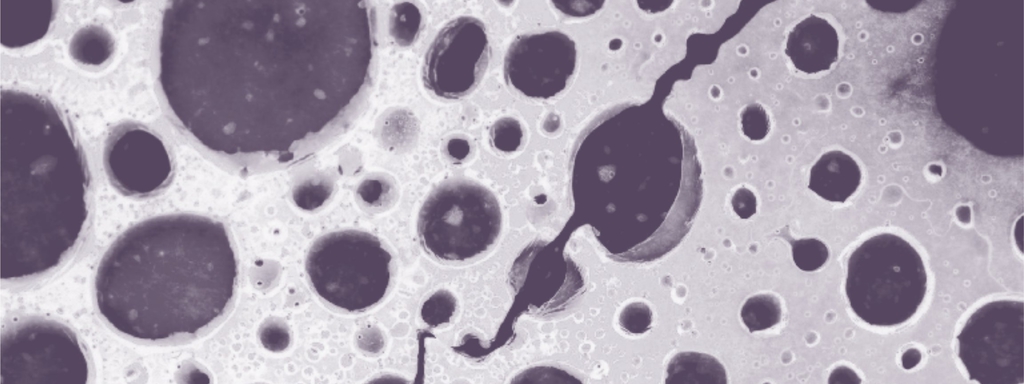
Naast genetische en epigenetische wijzigingen die in verband worden gebracht met het ontstaan van kanker, wordt nu ook de tumormicro-omgeving als factor beschouwd bij de maligne progressie. De vraag is of manipulatie van de intra- en extracellulaire pH van tumoren therapeutische mogelijkheden heeft.
Beste bezoeker, u heeft geen toegang.
Enkel (web)abonnees hebben toegang tot tijdschriftartikelen. Het webabonnement is nog in de maak.
U kunt zich wel alvast (gratis) registreren en tal van andere webartikelen raadplegen!
Auteur
Trefwoorden:
Verschenen in
Referenties
"Semenza GL. Targeting HIF-1 for cancer therapy. Nat Rev Cancer 2003;3:721-32.
Tredan O, Galmarini CM, Patel K, Tannock IF. Drug resistance and the solid tumor microenvironment. J Natl Cancer Inst 2007; 99:1441–54.
De Milito A, Fais S. Tumor acidity, chemoresistance and proton pumpinhibitors.FutureOncol2005; 1:779–86
Martinez-Zaguilan R, Seftor EA, Seftor RE, Chu YW, Gillies RJ, Hendrix MJ. Acidic pH enhances the invasive behaviour of human melanoma cells. Clin Exp Metastasis1996;14:176–86.
Rofstad EK, Mathiesen B, Kindem K,Galappathi K. Acidic extracellular pH promotes experimental metastasis of human melanoma cells in athymic nude mice. Cancer Res 2006; 66: 6699– 707.
Wachsberger PR, Landry J, Storck C. Mammalian cells adapted to growth at pH 6.7 have eleveted HSP27 levels and are resistant to cisplatin. Int JHyperthermia1997;13:251–5.
Raghunand N, Mahobey B, van Sluis R, Baggett B, Gillies RJ. Acute metabolic alkalosis enhances response of C3H mouse mammary tumors to the weak base mitoxantrone. Neoplasia 2001; 3:227–35.
Glunde K, Guggino SE, Solaiyappan M, Pathak AP, Ichikawaz Y, Bhujwalla ZM. Extracellular acidification alters lysosomal trafficking in humanbreast cancer cells.Neoplasia2003; 5:533– 45.
Martinez-Zaguila'nR,RaghunandN,LynchRMet al.pHanddrug resistance. I.Functional expression of plasmalemmal V-type H+- ATPase in drug resistant human breast carcinoma cell lines. BiochemPharmacol1999; 57:1037–46.
Lugini L,LozuponeF,MatarresePet al.Potentphagocytic activity discriminates metastatic and primary human malignant melanomas: A key role of ezrin. LabInvest 2003;83:1555–67.
Fais S, DeMilito A,YouH,QinW. Targeting vacuolar H+-ATPases as a new strategy against cancers. Cancer Res 2007; 67: 10627– 30.
De Milito A, Iessi E, Logozzi M et al. Proton pump inhibitors induce apoptosis of human B-cell tumors through a caspase-independent mechanism involving reactive oxygen species. Cancer Res2007;67:5408–17.
De Milito A, Canese R, MarinoMLet al. pH-dependent antitumor activity of proton pump inhibitors against human melanoma is mediated by inhibition of tumor acidity. Int J Cancer 2009; Oct 28.
Izumi H, Torigoe T, Ishiguchi H et al. Cellular pH regulators: potentially promising molecular targets for cancer chemotherapy. Cancer TreatRev 2003;29:541–9.
Cardone RA, Casavola V, Reshkin SJ. The role of disturbed pH dynamics and the Na+ ⁄Hexchanger in metastasis. Nat Rev Cancer 2005; 5:786–95.
Harguindey S, Arranz JL,WahlML, Orive G, Reshkin SJ. Proton transport inhibitors as potentially selective anticancer drugs. AnticancerRes2009;29:2127–36.
De Milito A, Canese R, MarinoMLet al. pH-dependent antitumor activity of proton pump inhibitors against human melanoma is mediated by inhibition of tumor acidity. Int J Cancer 2009; Oct 28.
DrochioiuG. Chronic metabolic acidosismay be the cause of cachexia: bodyfluid pHcorrectionmay bean effective therapy.Med Hypotheses2008;70:1167–73.
Lugini L, Matarrese P, Tinari A et al. Cannibalism of live lymphocytes by human metastatic but not primary melanoma cells.CancerRes 2006; 66:3629–38.
Lozupone F, Perdicchio M, Brambilla D et al. The human homologue of Dictyosteliumdiscoideumphg1A is expressed by human metastatic melanoma cells.EMBORep2009;10:1348–54.
Robey IF, Baggett BK, Kirkpatrick ND, et al. Bicarbonate increases tumor pH and inhibits spontaneous metastases. Cancer Res 2009;69:2260-2268.
White CR, Seymour RS. Allometric scaling of mammalian metabolism. J Exp Biol 2005;208:1611-1619.
Requena B, Zabala M, Padial P, Feriche B. Sodium bicarbonate and sodium citrate: ergogenic aids? J Strength Cond Res 2005;19:213-224.
Gullino PM, Grantham FH, Courtney AH. Glucose consumption by transplanted tumors in vivo. Cancer Res 1967;27:1031-1040.
Ashby BS. pH studies in human malignant tumours. Lancet 1966;2:312-315.
Rauen HM, Friedrich M, Norpoth K.Measurements on the manipulation of glucose-dependent tumor acidification in vivo. Z Naturforsch B 1968;23:1461-1475. [Article in German]
von Ardenne M, Reitnauer PG, Rohde K, Westmeyer H. In vivo pH measurements in cancer micrometastases during optimal overacidification Determinations with glass microelectrodes following standardization of the
blood glucose concentration at 4.10-3g ml-1 and attendance on stationary concentration ratios. Z Naturforsch B 1969;24:1610-1619.
Dickson JA, Calderwood SK. Effects of hyperglycemia and hyperthermia on the pH, glycolysis, and respiration of the Yoshida sarcoma in vivo. J Natl Cancer Inst 1979;63:1371-1381.
Prescott DM, Charles HC, Sostman HD, et al. Manipulation of intra- and extracellular pH in spontaneous canine tumours by use of hyperglycaemia. Int J Hyperthermia 1993;9:745-754.
Zhou R, Bansal N, Leeper DB, et al. Enhancement of hyperglycemia induced acidification of human melanoma xenografts with inhibitors of respiration and ion transport. Acad Radiol 2001;8:571-582.
Kuin A, Smets L, Volk T, et al. Reduction of intratumoral pH by the mitochondrial inhibitor m-iodobenzylguanidine and moderate hyperglycemia. Cancer Res 1994;54:3785-3792.
Zhou R, Bansal N, Leeper DB, Glickson JD. Intracellular acidification of human melanoma xenografts by the respiratory inhibitor m-iodobenzylguanidine plus hyperglycemia: a 31P magnetic resonance spectroscopy study. Cancer Res 2000;60:3532-3536.
Burd R, Wachsberger PR, Biaglow JE, et al. Absence of Crabtree effect in human melanoma cells adapted to growth at low pH: reversal by respiratory inhibitors. Cancer Res 2001;61: 5630-5635.
Lee I, Glickson JD, Dewhirst MW, et al. Effect of mild hyperglycemia +/- metaiodo-benzylguanidine on the radiation response of R3230 Ac tumors. Adv Exp Med Biol 2003;530:177-186.
Tainter ML, Stockton AB, Cutting WC. Use of dinitrophenol in obesity and related conditions: a progress report. JAMA 1933;101:1472-1475.
Burd R, Wachsberger PR, Biaglow JE, et al. Absence of Crabtree effect in human melanoma cells adapted to growth at low pH: reversal by respiratory inhibitors. Cancer Res 2001;61:
Han YH, Kim SW, Kim SH, et al. 2,4-dinitrophenol induces G1 phase arrest and apoptosis in human pulmonary adenocarcinoma Calu-6 cells. Toxicol In Vitro 2008;22:659-670
Fais S. Proton pump inhibitor-induced tumour cell death by inhibition of a detoxification mechanism. J Intern Med. 2010 May;267(5):515-25. Review. PubMed PMID: 20433578.
McCarty MF, Whitaker J. Manipulating tumor acidification as a cancer treatment strategy. Altern Med Rev. 2010 Sep;15(3):264-72. Review. PubMed PMID: 21155627.
De Milito A, Canese R, Marino ML, Borghi M, Iero M, Villa A, Venturi G, Lozupone F, Iessi E, Logozzi M, Della Mina P, Santinami M, Rodolfo M, Podo F, Rivoltini L, Fais S. pH-dependent antitumor activity of proton pump inhibitors
against human melanoma is mediated by inhibition of tumor acidity. Int J Cancer. 2010 Jul 1;127(1):207-19. PubMed PMID: 19876915.
De Milito A, Fais S. Tumor acidity, chemoresistance and proton pump inhibitors. Future Oncol. 2005 Dec;1(6):779-86. Review. PubMed PMID: 16556057

